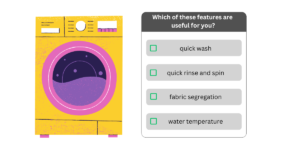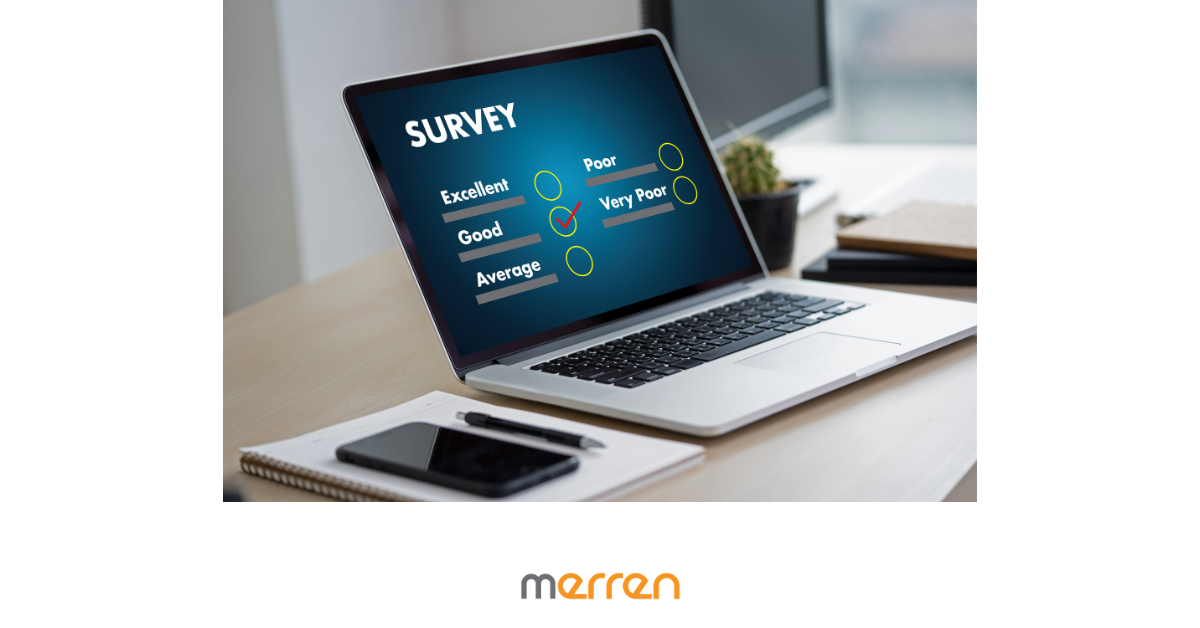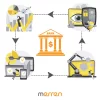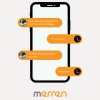One of the most common methods for collecting quantitative data is using closed-ended questions. These questions offer specific answer options and are easy to analyze, making it easier to draw conclusions from the data collected. In this blog, we will explore what closed-ended questions are and when to use them effectively. We’ll also examine some advantages of using closed-ended questions that can be used in different scenarios.
What are close ended questions?
Closed-ended questions provide a predetermined set of answer options, making them useful for collecting quantitative data that can be analyzed statistically. They often include “yes” or “no” options or multiple-choice answers. It also includes various scales that require a rating based on stars, ‘agree or disagree’ or ‘likely to unlikely’ metrics.
Types of close ended questions
Closed-ended questions are an effective way to collect quantifiable data in surveys, questionnaires, and interviews. Different types of closed ended questions include multiple-choice, rating scales, yes/no, ranking, and likert scale questions. Here are some examples that can give you an overview of when you can use these scales.

Dichotomous questions explained
Dichotomous questions are a great way to gather quantifiable data quickly and efficiently. By offering only two answer options, such as yes or no; these questions can capture critical information immediately. Although it may seem limiting by only allowing for one-word answers, careful analysis of the responses can result in quantifiable data that can be analyzed statistically for significance. With advantages such as higher response rates and efficient data collection and analysis, it’s no wonder why dichotomous questions are widely used in surveys and other forms of research.
Multiple-choice questions and their formats
In surveys, multiple-choice questions offer predefined answer choices such as single or multi-answer, ranking and likert scales. These close-ended questions along with matrix questions facilitate careful analysis leading to statistical significance in quantifiable data. Multiple choice is another way of understanding that your respondent might prefer one of more options. This can collect a little more information than a yes or no scale.
Rating scale format
Rating scale questions is a great way to gather quantifiable data on respondents’ attitudes and perceptions towards different products and concepts. The responses obtained can undergo careful analysis using statistical methods. Example, a company might ask the users if the product fulfils the need gap. The rating scale would be from a number from 1 to 5 ranging from ‘highly effective’ to ‘highly ineffective’.
Satisfaction metrics of NPS and CSAT scores
A standardized method to determine customer satisfaction is through the use of NPS (Net Promoter Score) and CSAT (Customer Satisfaction Score) scores. These metrics use a close-ended form of rating scales to gather data on the customer’s overall satisfaction with a product or service. This method is frequently used for in-app surveys, after a customer service call or after an experience with a brand.
Rank order format
Rank order questions ask respondents to rank a set of multiple-choice answers in descending order of preference or importance. It enables respondents to compare items and rank them according to their preference. To ensure accurate responses, it’s essential to keep the number of answer choices manageable.

Checklist-style format
Checklist style format means that a certain question will have different options. It will ask customers to choose options that will fit the criteria. For example a product (say a washing machine) will have certain features. They would require customers to choose the features relevant for them. ‘Which of these features are useful to you?’ and answers could be along the lines of ‘quick wash’, ‘segregates fabrics’, ‘water temperature adjustments’ to name a few.
When to use close ended questions effectively?
Using closed-ended questions can collect quantitative data such as measuring customer feedback or employee experience. The benefits are plenty: higher response rates, statistical significance in data analysis, and easy analysis of quantifiable data. However, one must be careful not to over-rely on them as they may not provide a qualitative of the customer experience or satisfaction levels. Therefore, it is important always to balance closed-ended with open-ended survey responses.
Conducting quantitative insights with close ended questions
Quantitative research is very specific when it comes to collecting responses from the customer base. It measures on certain metrics, numbers, emoticons, and rating scales. This is a quick way to collect responses before offering the chance to seek qualitative data ( open ended responses). The first line of seeking feedback will always be quantitative in nature. Some commonly used rating scales are net promoter score (NPS), customer effort score (CES) and customer satisfaction score (CSAT) metrics.
Wanting a specific set of responses with close ended questions
For most service based applications, rating scales and other close ended sets of feedback format are frequently used. This is an effective way to collect customer data without much cognitive load. It is faster, easier to identify detractors from passives and promoters. The analysis is faster since they are numeric or rating based. With an open ended option, there is a greater involvement when it comes to answer analysis.
Advantages of using close ended questions in business
There are several advantages of using close ended survey questions, that makes it easier for marketers to collect faster responses and analyze them real time. Here are some key pointers:
Standardized responses
Using a predetermined set of answer options, participants can choose from a restricted spectrum of alternatives. This guarantees uniformity in answers and streamlines data analysis. Researchers can effortlessly measure and contrast responses as all participants are presented with identical response choices.
Efficient data collection
Utilizing close ended questions can expedite the process of data collection and analysis. By presenting respondents with predetermined options, they can promptly choose the most applicable answer. Additionally, evaluating closed-ended data typically requires less time as compared to open-ended answers since the information can be effortlessly quantified and condensed.
Comparability and benchmarking
The use of close ended questions helps researchers make direct comparisons between different respondents or groups. This is possible by providing the same set of response options, making it easier to benchmark and compare responses across various demographic groups, time periods, or other relevant factors. Such an approach helps identify patterns, trends, and differences in responses, which ultimately leads to more insightful conclusions.
Reduced bias
By restricting the range of possible responses, a closed ended means of seeking feedback is effective in minimizing response bias. When survey takers are provided with a pre-determined set of choices, they are less likely to inject their own prejudices or personal interpretations into their responses. This approach can result in more dependable and impartial information.
Quantifiable data
Quantitative data produced by close ended questions can be statistically analyzed with ease. The answers received can be summarized, tabulated, and presented in numerical or graphical formats. This simplifies statistical analysis, allowing researchers to make conclusions, detect correlations, or conduct more quantitative research.
Offering open-ended options for respondents
Open-ended questions offer respondents to share opinions in their own words. However, incorporating a few open-ended options alongside close ended questions can help researchers gather more detailed information. This approach is a good way for respondents to express their thoughts in a free-flowing format while still providing quantifiable data that can be analyzed statistically. A mix of the two generally can encourage a high survey response rate and bring extra information to the table. A survey that has both qualitative data and quantitative insights, can help us gauge customers, a little more than usual.
Conclusion
Using Merren, you can formulate your own survey to capture customer feedback. There are predetermined set of questions that can help you collect extensive quantitative insights. Additionally, collecting quantitative insights with Merren is a superfast exercise. We deploy Whatsapp surveys, dynamic email surveys and web based chatbot surveys. It is time to 10x your feedback collection process.
To learn how you can collect quantitative insights at a speed, sign up for our 14 day free trial. If you also want the process to be hands free, check out our AI Survey Builder here.





